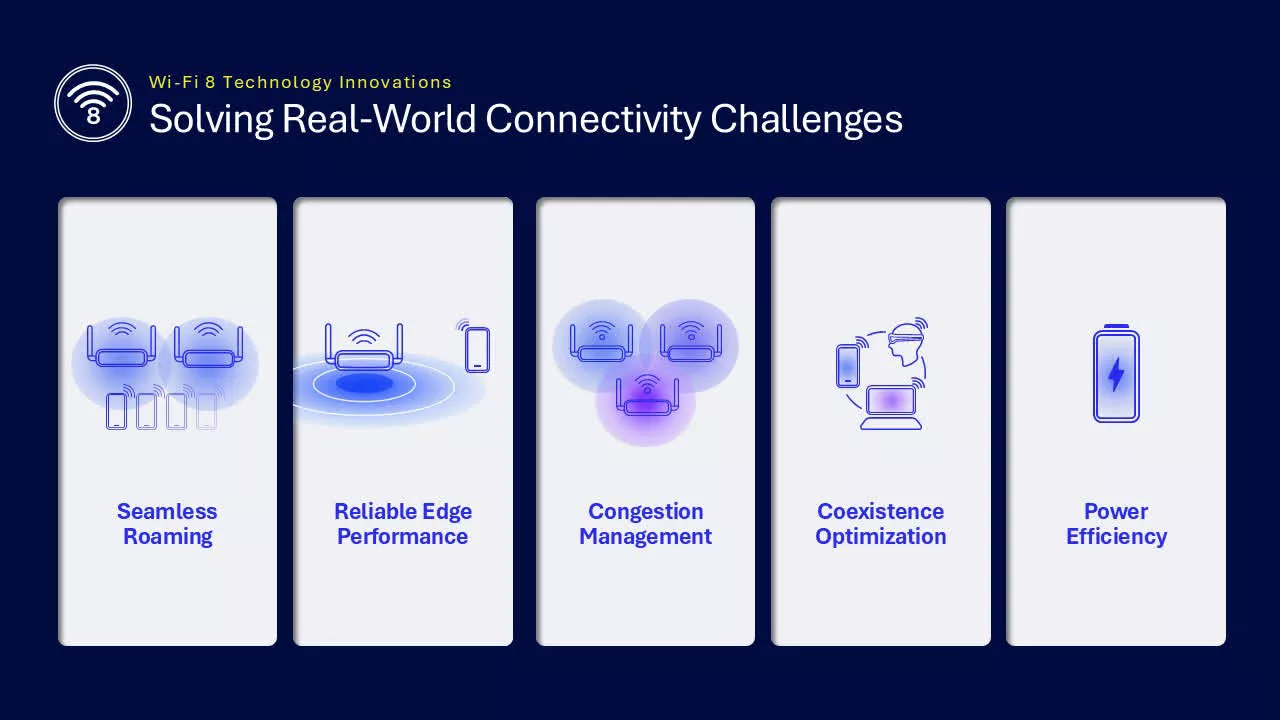Serving tech enthusiasts for over 25 years.
TechSpot means tech analysis and advice you can trust.
Forward-looking: The latest devices are only now starting to support Wi-Fi 7, and so Wi-Fi 8 remains several years away, but members of the group that defines Wi-Fi standards are already previewing what comes next. Wi-Fi 8 is designed to deliver more reliable connections, particularly in crowded and high-traffic public environments.
A blog post from Qualcomm details several new technologies the company hopes will strengthen Wi-Fi 8 connections in challenging scenarios. The new standard aims to facilitate the growth of AI, industrial automation, and advanced wearables.
Wi-Fi 8, also known as 802.11bn, will maintain the same maximum bandwidth as Wi-Fi 7 (802.11be) but promises fewer lost packets and lag spikes, especially in high-interference conditions. Qualcomm outlined multiple new technologies that will set Wi-Fi 8 apart, delivering what it calls an Ultra High Reliability experience.
For example, Seamless Roaming allows devices to maintain low-latency connections when moving between access points by using Single Mobility Domains. Meanwhile, physical layer enhancements will improve connection quality for devices operating at the edge of an access point's range.
Wi-Fi 8 also aims to enhance connectivity in crowded environments such as office buildings, apartment complexes, campuses, and public areas. Multi-AP coordination enables multiple access points to communicate and share resources more efficiently.
Furthermore, Wi-Fi 8 will strengthen connections both between and within devices through Coexistence Optimization, which improves performance when different components share antennae. This feature could boost the reliability of devices that offload processing power, such as wearables. Enhancing energy efficiency to extend battery life is another key goal.
MediaTek's whitepaper from last year described additional Wi-Fi 8 technologies. For example, nearby access points will be able to optimize power usage and manage connections without interfering with distant devices, thanks to Coordinated Spatial Reuse.
Coordinated Beamforming, meanwhile, will enhance signal accuracy between devices in dense settings such as public spaces or buildings filled with numerous connected devices. And when multiple machines download the same file, Wi-Fi 8 will automatically activate Dynamic Subchannel Operation to prioritize devices based on speed.
Qualcomm estimates that Wi-Fi 8 will increase throughput by 25% in non-ideal conditions, reduce dropped packets by 25% when switching between access points, and cut latency by 25% in scenarios that typically cause lag spikes.
Early drafts of 802.11bn emerged late last year, and Qualcomm expects the 1.0 draft specification to arrive later this month. However, Wi-Fi Alliance certification and final workgroup approval aren't expected until 2028, meaning Wi-Fi 7 will remain the new standard for the foreseeable future.











 English (US) ·
English (US) ·